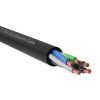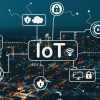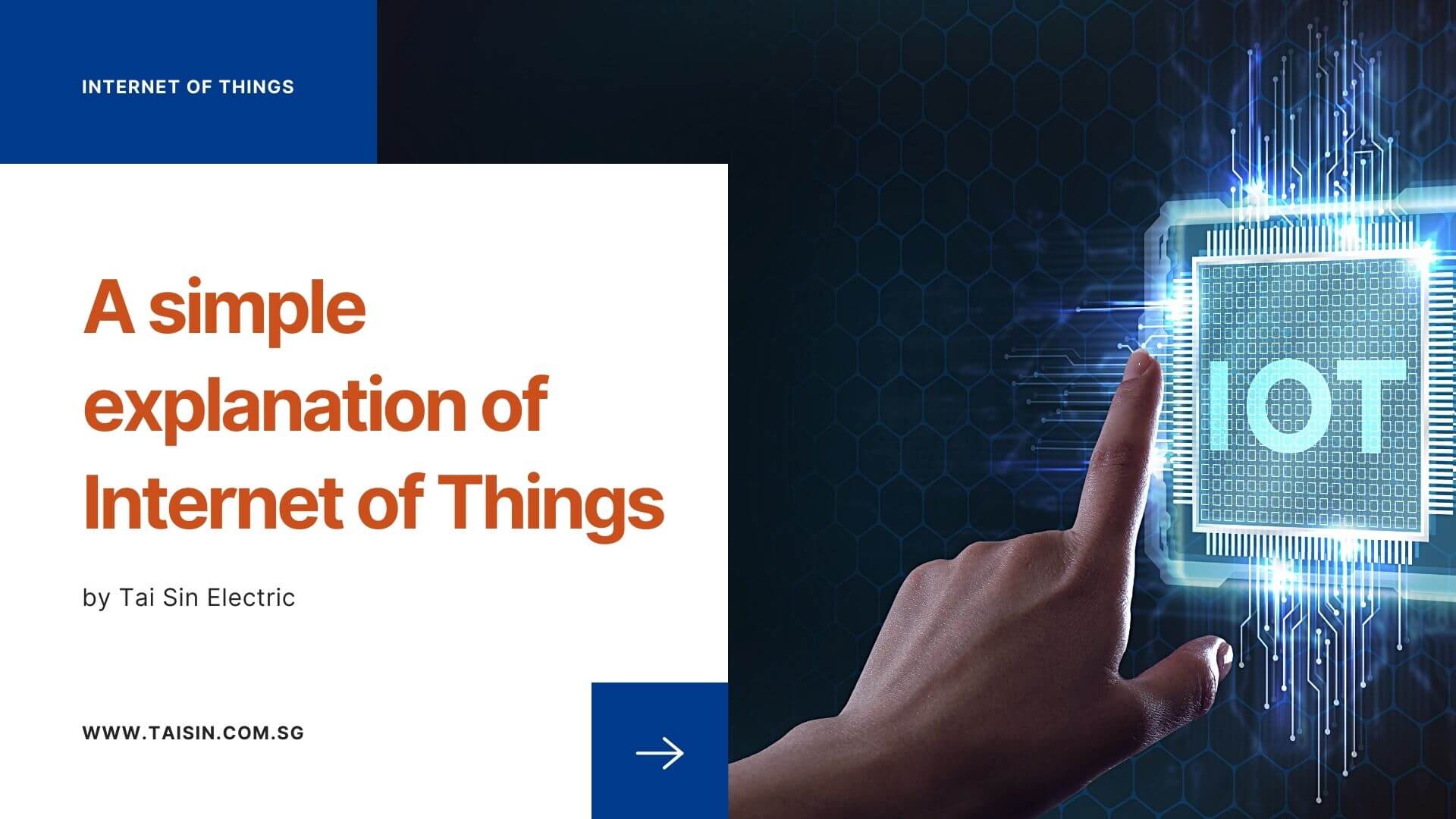
The Internet of Things (IoT) refers to interconnected, Internet-connected objects that are capable of collecting and transmitting data over a wireless network without interference of humans. Today, businesses are driven by IoT and the prospect of increasing revenue, reducing operating costs, and improving capabilities. Businesses are also driven by the need for regulatory compliance. Regardless of the reasons, deployment of IoT device is necessary to smooth the workflow, visualize usage patterns, automate processes, meet compliance requirements, and compete more effectively in changing business environments. Provides statistics and insights.
Contents
Internet of Things - IoT Definition (Explanation with examples)
Our planet has more connected devices than humans. IoT will change the way businesses, governments, and humans interact with the rest of the connected world. The possibilities for personal or business are endless. A ‘thing’ can refer to an attached medical device, a biochip transponder (Think Cattle), a solar panel, an attached automobile that alerts the driver of potential problems (fuel, tire pressure, maintenance needs, etc.). Or any object, with the help of sensors, which have the ability to collect and transmit data over a network. There are many amazing benefits to connecting to the Internet. We’ve all seen these benefits with our smartphones, laptops, and tablets, but it’s true for everyone else. And yes, I mean everything. The Internet of Things means taking everything in the world and connecting them to the Internet.
When something is connected to the Internet, it means that it can send or receive information, or both. This ability to send and / or receive information makes things smarter, and much better. Let’s use a smartphone again as an example. You can listen to any song in the world, but not because every song is stored in your phone. This is because every song in the world is stored somewhere else (this place is called “Cloud”), and your phone can request the song, and get the information to stream it.
Sensors can measure temperature, humidity, air quality, light, and anything else you think of. When sensors are paired with an Internet connection, they allow us to gather information from the environment that, in turn, helps us make better decisions.
In a field, automatically getting information about soil moisture can tell farmers exactly when crops need to be watered. Instead of giving too much or too little water (either of which can yield good results), the farmer will make sure that the crops get the right amount of water.
How IOT Works
Smartphones play a huge role in IoT, as many IoT devices can be controlled through the app on the smartphone. You can use your smartphone to communicate with your smart thermostat, for example, to provide the best temperature for you when you get home from work. Another plus? This eliminates the need for non-heating heating and cooling, which saves you money on energy costs. IoT devices have sensors and mini-computer processors that process the data collected by the sensors through machine learning. Basically, IoT devices are mini computers that are connected to the Internet, and are vulnerable to malware and hacking. Machine learning occurs when computers learn for humans in the same way – by collecting data from their surroundings – and that’s what makes IoT devices smart. This data can help the machine learn your preferences and adjust itself accordingly. Machine learning is a type of artificial intelligence that allows computers to learn without being programmed by anyone.
Benefits of IOT
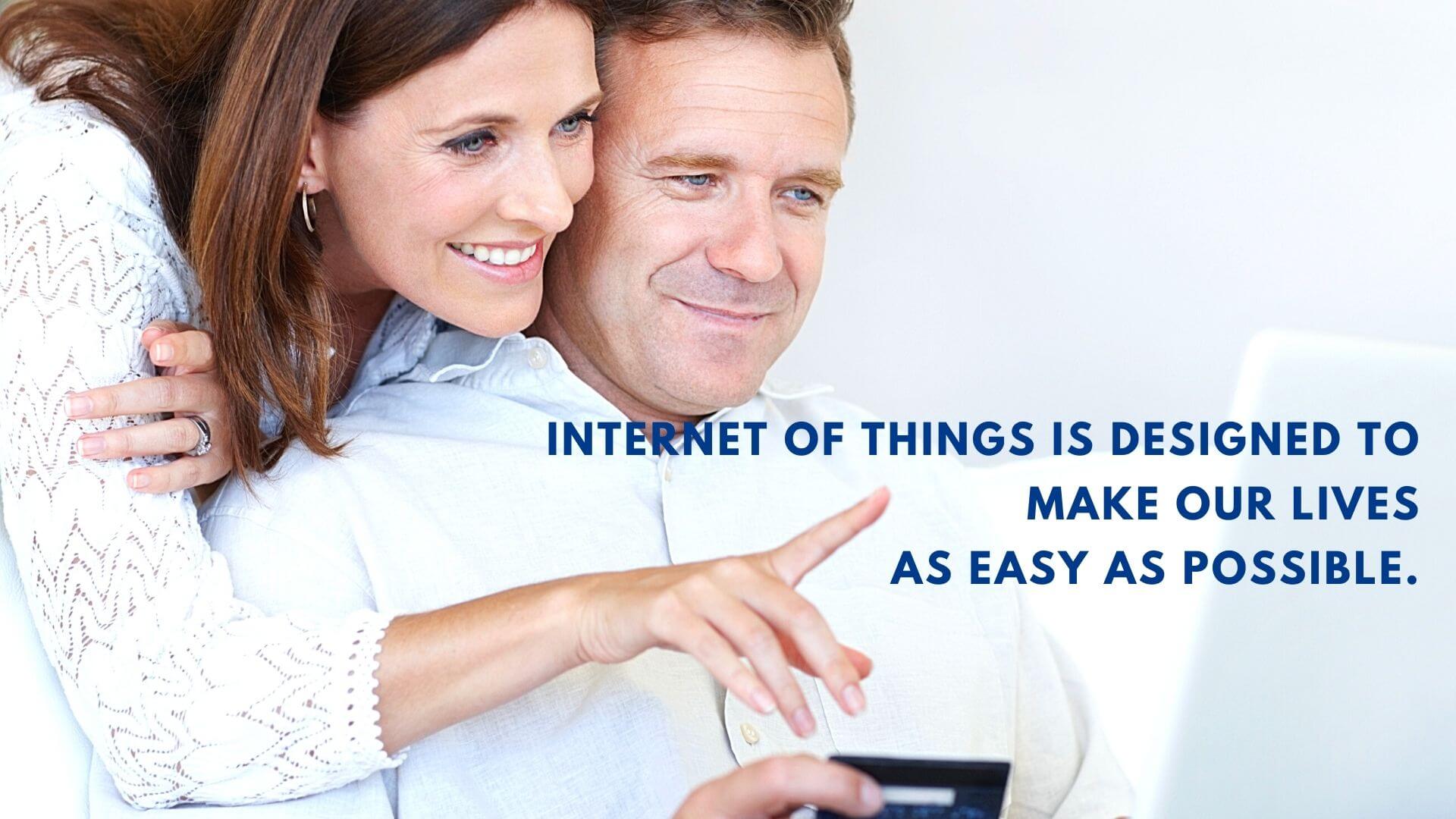
Internet of Things is designed to make our lives as easy as possible. Here are some examples:
-
- Smart bathroom scales are working with your treadmill, delivering food preparation ideas to your laptop or smartphone to keep you healthy.
- Security devices that monitor your home turn on and off the lights as you enter and exit the room and play videos so you can check in while away.
- Smart voice assistants who take your usual take-out orders on command, which becomes a whirlwind to deliver fresh food to your door.
- The more businesses use IoT devices to streamline operations and increase profitability, the more Internet of Things technologies will be tailored to help those businesses succeed. From cybersecurity to workplace efficiency, IoT devices are already making an impact on companies’ bottom lines.
- One way to harness the power of IoT to enhance a company’s performance is to use it to reduce repetitive or time-consuming tasks.
- Many businesses seek to access the revenue-generating power of digital services, mostly lacking an integrated strategy to follow this avenue. IoT is a game changer in this regard, as advanced analytics, artificial intelligence, and smart utility grids make it easy for SMBs to collect actionable data that they are looking for their customers.
- The nature of IoT technology means that businesses now have the opportunity to let their employees work from virtually anywhere. This is flexibility that can provide key benefits, especially to SMBs.
Why IOT security is important and how to improve it
We are capable of doing things we never imagined. But like everything good, IoT has a downside: it’s becoming increasingly attractive to cybercriminals. More connected devices means we are more likely to target attacking vectors and hackers. Unless we move quickly to address this growing security concern, we will soon face an inevitable disaster. Earlier this month, researchers found a wide range of IoT baby monitors posed with serious threats, which could be exploited by hackers to perform a number of malicious activities, including monitoring live feeds, cameras. Change settings and allow other users to remotely view and control.
In another development, cars connected to the Internet have been shown to be compromised, and hackers can perform a number of malicious activities, including controlling the entertainment system, opening doors or even preventing the car from moving.
Wearables can also be a threat to your privacy, as hackers can use motion sensors included in smartwatches to steal information about your typing, or they can use you with smartwatch apps or health tracker devices. Which can collect health data. In short compromise on the security can be a uncovering loss for people so that is why it is important to improve the security of IOT.
With more and more devices connected to the Internet, things of the Internet are entering our lives. IoT devices are making things easier for users and making IoT secure becomes a priority. Here are three effective ways to improve IoT security:
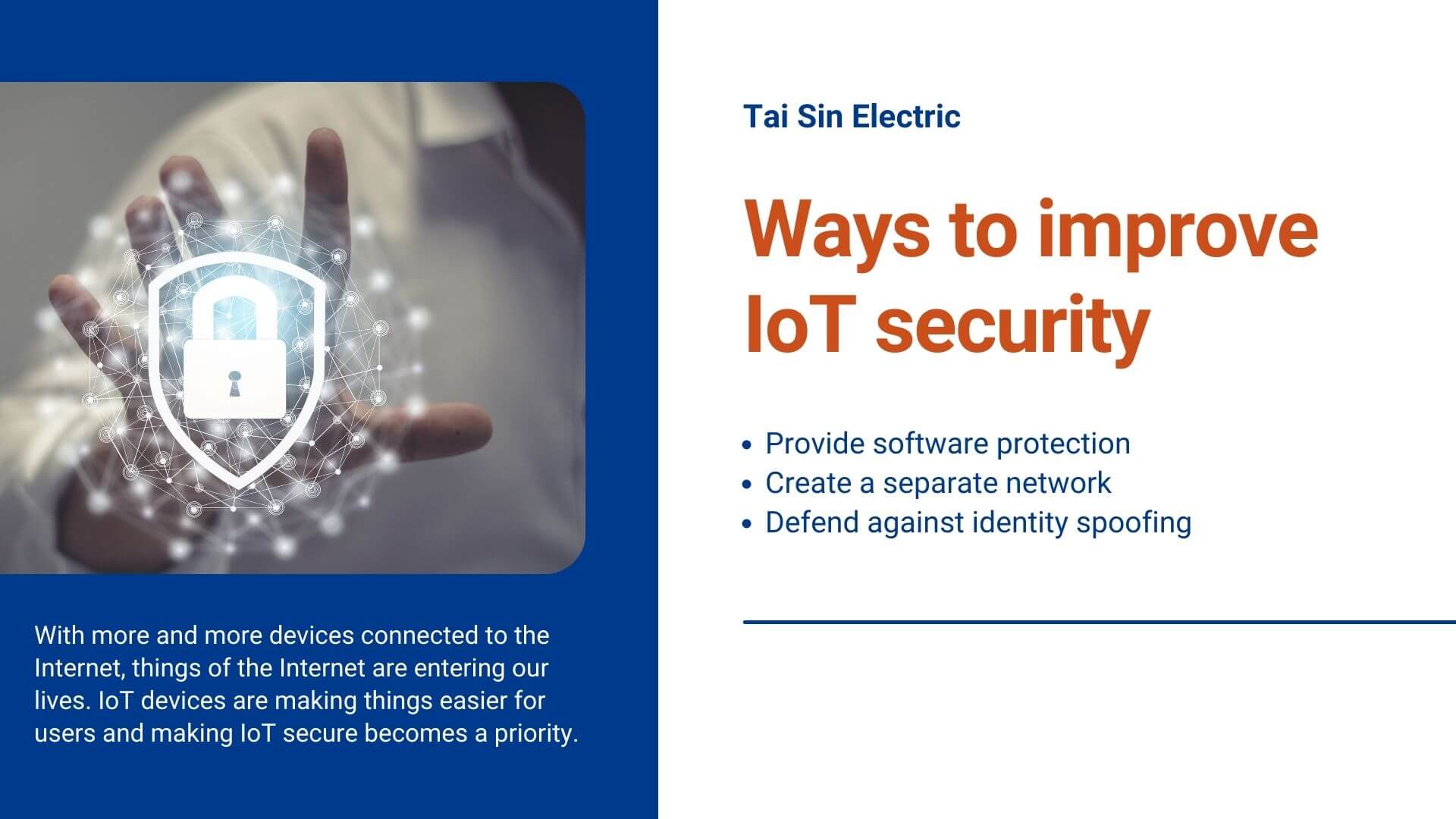
Devices connected to IoT can be protected by implementing active security measures in their software. Providing security measures such as password protection for access to software is a way to protect devices from threats and potential attacks. Passwords can be digital codes, static or dynamic, encrypted for the user. Another way to provide IoT security is to restrict Internet access to connected devices. Blocking a program behind a firewall or restricting access to only certain features of the software prevents important data from being leaked. All devices connected to the network should be updated with the latest software. Implement regular monitoring for potential hazards and seek immediate solutions to bugs and security vulnerabilities found during inspections.
Keeping IoT devices connected to your private network is a great practice. Devices should be banned from communicating with the central network. This ensures that devices are connected to the Internet but will not have access to important files. Individual networks can be configured and managed from a central location. Investing in device access management tools is also a good option. Device access management tools are allowed to control which devices can access which data and prevent unauthorized access.
Hacking techniques have evolved over the years. This poses a particular threat to IoT security. It is imperative for businesses to protect themselves from the latest hacking attacks on their systems. Safety measures must be taken to ensure that devices connected to the IoT are not easily hollowed out. All IoT devices must have their own unique identities. The IT and security department responsible for providing secure networks must ensure that all connected devices are legitimate.
With the advent of IoT devices in homes and offices, hackers have devised clever ways to exploit the flaws in these devices. Adopting the above security measures can help prevent various IoT attacks.
With the advent of IoT devices in homes and offices, hackers have devised clever ways to exploit the flaws in these devices. Adopting the above security measures can help prevent various IoT attacks.
Top 10 IoT applications
1. IoT Sensors: The IoT sensor consists of manual or digital sensors connected to circuit boards such as the Arenol Uno or Raspberry Pi 2. Circuit boards can be programmed to measure data collected from a sensor device such as carbon monoxide, temperature, humidity, pressure, vibration., And movement.
2. IoT Data Analytics: Businesses are increasingly using IoT data analytics to determine trends and patterns by analyzing big and small data. IoT data analytics apps can analyze structure, structure, and semi-structured data to extract meaningful insights.
IoT can be applied to data analytics to analyze a variety of data, including motion data sets, geographic data, and healthcare data. It can be used by businesses for forecasting and descriptive analysis to improve customer knowledge, enhance operational efficiency and create business value.
3. IoT Tracking and Monitoring System: Many businesses are using IoT systems to track assets. IoT asset tracking devices use GPS or Radio Frequency (RF) to track and monitor features. Smart devices can be used to identify and verify assets over long distances.
4. IoT Connected Factory: Businesses can also use IoT-linked factory solutions such as Azure IoT to manage industrial IoT devices. Connected cloud software can be populated with a variety of resources that allow you to control a range of devices.
5. Smart Supply Chain Management: Supply Chain Manager Smart Routing and Rewriting Ltd. Better predictions with algorithms. Smart IoT devices attached to the packages can provide post-event GPS and RFID signals that can help make informed supply chain decisions.
6. Smart Barcode Readers: IoT barcode readers can help retailers with better inventory management. Readers support AI-based digital signal processing. These devices can improve operations in many areas, including retail, logistics, warehousing, and more.
7. Smart Grids: Smart grid is another industrial application of IoT. Smart Electrical Grid allows real-time monitoring of power supply and demand data. This includes the application of computer intelligence for efficient resource management.
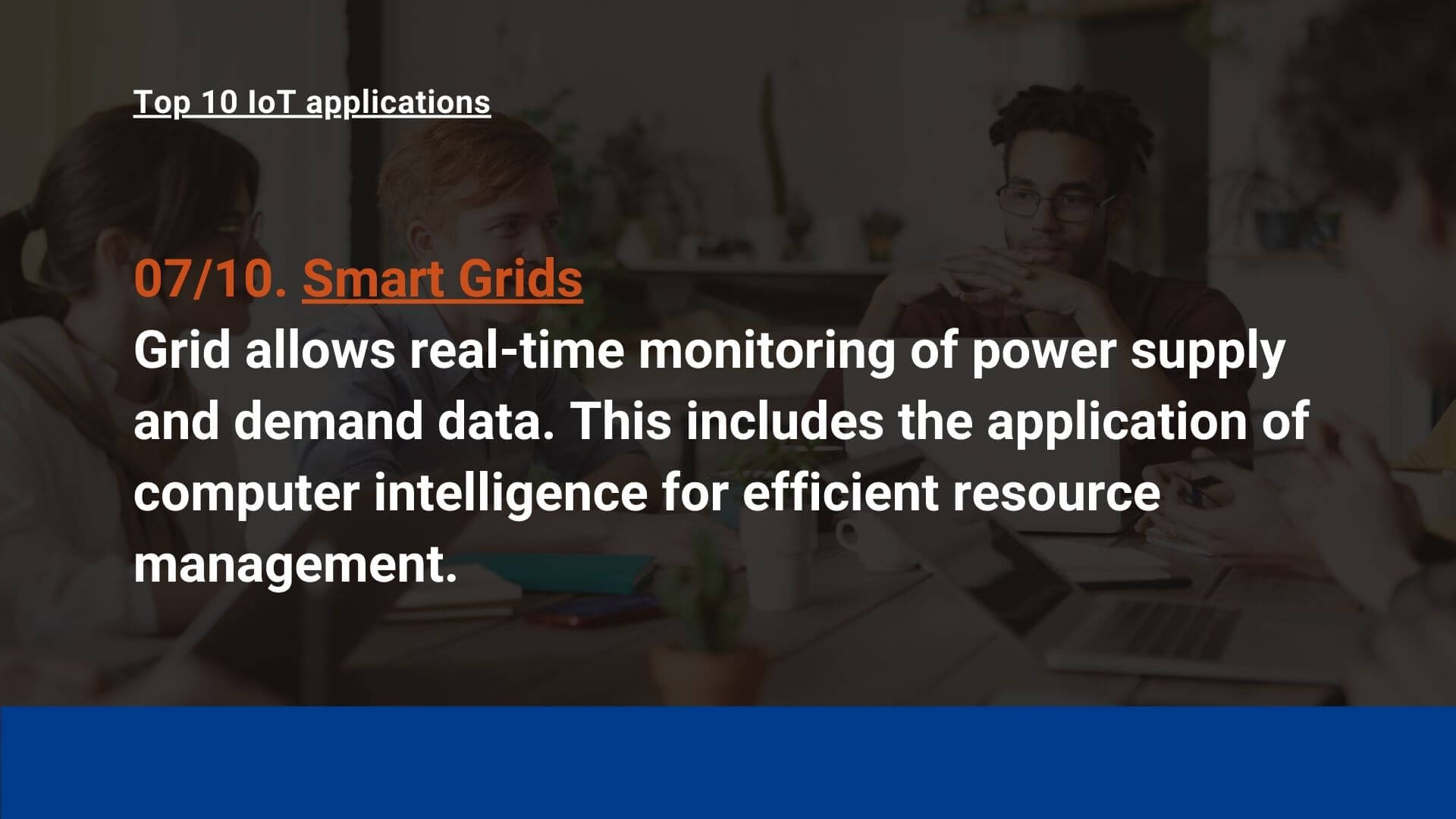
8. Connected HealthCare System: IoT has numerous applications in the healthcare industry. Using these smart medical devices, this technology can be used to provide high quality medical services. Also known as the Internet of Medical Items (IoMT), this technology can help monitor and support important data that can be helpful in medical decisions. Through IoT medical devices, medical services can be made more accessible through public services.
9. Smart Farming: Farmers can use smart IoT farming applications to improve many different activities, such as determining the best timing of harvesting, creating a fertilizer profile based on soil chemistry, and soil nutrient and moisture levels.
Some examples of IoT farming tools include Smart Element, AllMETOE, and Pynco. These devices can detect weather conditions and other environmental data. The concept of smart farming could revolutionize the agricultural industry. Applications of IoT technologies can help increase both the quality and quantity of agricultural produce.
10. IOT in Smart Buildings: Companies around the world recognize the value and capabilities gained through building automation and control systems that benefit from IOT.
Use our semiconductors to design highly efficient and flexible building control systems such as:
- Automatic door control
- Interference alarm sensor
- Fire protection
- Sprinkler control
- Electric load / rail switching
- Input supply multiplexing
Building automation and automated building control systems are nothing new – facility owners, operators and managers have learned from the operational and cost-effectiveness of automated infrastructure such as security, lighting, heating, ventilation and air conditioning (HVAC), and more. Benefited for a long time. Smart buildings, which connect building tasks through the Internet of Things (IoT), make tasks such as building temperature, safety and maintenance easier through mobile devices and computers.
The types of IoT sensors used in facility management, building automation and smart building applications are limited to just your imagination. Common use cases include:
- Climate control, including temperature, humidity, vibration, etc.
- CO monitoring
- Electrical usage
- Fire detection
- Heating, ventilation and air conditioning systems (HVAC)
- Lighting control
- Occupancy
- Predictive maintenance
- Security and access control
- Structural health
- Water monitoring



